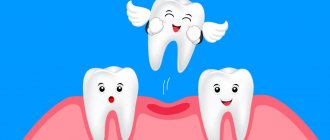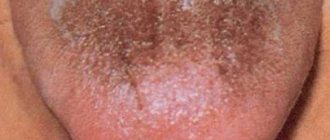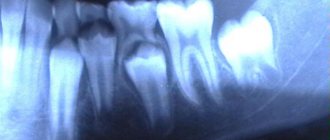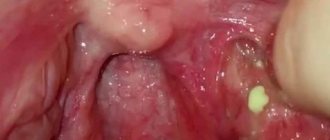Why are breastfeeding women afraid to have their teeth treated?
Any step of a nursing mother can affect the health of the child, so before performing the simplest usual actions, she evaluates whether this will harm the baby. When visiting a dentist, three things may cause concern:
- To make a diagnosis, you may need an x-ray of the diseased tooth;
- During treatment, filling materials and anesthesia medications are used;
- After the procedure, a course of antibiotics may be prescribed.
A young mother may fear that x-rays and medications will make breast milk unsuitable for feeding, and just in case, she may completely refuse dental treatment and postpone going to the doctor until the time when the baby is weaned.
How to avoid darkening of teeth
Once you achieve snow-white results in your tooth enamel, you need to try to maintain the whiteness. To do this, carefully monitor your diet, use special whitening pastes, herbal ones are especially suitable. The use of the following products should be limited:
- Dark-colored soft drinks and carbonated drinks;
- Black tea and coffee;
- Blueberries and blackberries;
- Chocolate and chocolate candies;
- Citrus fruit;
- Tomato sauce;
- Some medications;
- Chewing tobacco and cigarettes.
To maintain white enamel and healthy gums, brush your teeth at least twice a day for two to four minutes. Rinse your mouth regularly and use dental floss. Proper care removes plaque in a timely manner and prevents the formation of stains on tooth enamel.
Is it possible to treat teeth during breastfeeding?
If we compare the potential threat from medications used in dental treatment and from pathogenic bacteria in the carious cavity of the tooth, then the latter are much more dangerous for the child. Remember how many times a day a mother kisses her baby, not to mention the fact that she can taste food or drink from baby dishes to make sure they are at normal temperature? The infection will get to the child one way or another. Therefore, treating the teeth of a nursing mother is not only possible, but also absolutely necessary. You just need to warn your doctor about your situation.
If you go to the dentist at the first signs of caries, you can get by with minimal manipulations that do not require x-rays, anesthesia, or antibiotics. In this case, you don’t have to worry at all that dental treatment will somehow affect breast milk, and feed the baby immediately upon returning from the doctor.
X-rays during breastfeeding are also not contraindicated: short-term exposure to X-rays when photographing a diseased tooth will not make milk radioactive and will not harm the baby through breast milk. Moreover, filling materials will not penetrate into the blood and cannot pass into breast milk. And if there is a need for antibiotics, you can choose a medicine that is compatible with breastfeeding.
How to whiten teeth at home
When using these methods, it is important that the mother and baby are not allergic to any component. The most common remedy is soda. This is a strong and gentle natural bleach. Mix a quarter teaspoon of baking soda with water and brush your teeth with the mixture.
Apples and strawberries can whiten enamel naturally. But it is important only to eat strawberries and not leave pieces of the berry on the enamel and gums. With prolonged exposure, the acid in strawberries can damage tooth enamel. In addition, you should be careful when eating this berry during lactation, as it is a fairly allergenic product. You can find a complete list of allergenic foods here.
Dentists recommend periodically rinsing your mouth with salted water. To do this, stir a teaspoon of salt in a glass of warm boiled water. Wait until it cools down and rinse your mouth. Salt water cares for gums, relieves inflammation and kills harmful microbes. In addition, it gradually whitens the enamel.
A mixture of bay leaf and orange peel is another affordable way to whiten enamel. To prepare the product, use a few pieces of orange peel and one bay leaf. Grind the crust, grind the leaf to a powder and mix the ingredients. Rub the mixture onto your teeth and leave for five minutes, then rinse your mouth with warm water. Repeat the procedure once a week.
You can use banana peels in a similar way. Take a small piece of banana peel and rub it on your teeth. Leave the mixture on for two to three minutes and rinse your mouth with warm water. This cleaning is done twice a week.
Anesthesia for dental treatment during breastfeeding. How not to harm a child?
As for anesthesia, there is also no need to endure pain during the procedure.
If the doctor is warned that you are breastfeeding, he will select a drug compatible with breastfeeding. Breastfeeding women should not use painkillers containing adrenaline. Old-generation anesthetics - novocaine, lidocaine, which are practically not used in modern dental practice, can penetrate into breast milk in small quantities.
It is important!
Modern drugs, for example, ultracaine, articaine, are not contraindicated during breastfeeding if used in recommended doses.
Before treatment, check with your doctor what kind of drug he is going to give you, and whether the drug is compatible with breastfeeding.
Breastfeeding and baby's dental health
The birth of a child is an important event in the life of every woman, and every mother wants her child to grow up healthy. Breastfeeding helps the child’s body grow and develop harmoniously as a whole, and also has a great influence on the formation of the maxillofacial skeleton, speech, and hearing. When breastfeeding and when bottle-feeding, the baby's bite will develop differently.
It has long been known that breast milk is the healthiest and most beneficial food for a child; it contains all the necessary minerals and trace elements that are necessary for the formation of teeth. But can milk destroy teeth? What does research say about this? Children who were breastfed for at least 12 months were 56% less likely to develop a malocclusion than children who were breastfed for less than that period [1]. The formation of a child’s teeth occurs during pregnancy: in the early stages, the crowns of baby teeth are formed, and in the seventh or eighth month, the first molars (permanent) are formed. The shape and color of teeth are genetically determined, but it is entirely within the mother’s power to make them healthy, and this concern for the health of the child’s teeth begins already from the period of breastfeeding [2]. Bad teeth in a child are not only unsightly, but also not healthy, painful and expensive, and it is also completely preventable!
The influence of breastfeeding on the development of occlusion.
The first milk teeth begin to erupt at 6-7 months - these are the lower incisors, and the last to erupt are the upper and lower chewing teeth, this happens by 20-30 months. This is the period of formation of a temporary occlusion, and it approximately corresponds to the physiological periods of breastfeeding, which is why the teeth began to be called milk teeth.
When a baby is born, his lower jaw lags in growth from the upper jaw, it seems to be shifted back relative to the upper jaw - this is necessary to protect it during childbirth, since it is the only movable bone on the human head and can be injured. But this relationship of the jaws is temporary, the child grows, matures, and the lower jaw must “catch up” with the upper, because in adults the jaws are developed evenly.
When a baby suckles, he actively works with his lower jaw and tongue; these movements are unique. The lower jaw lowers and moves forward, and the tongue makes wave-like movements during sucking, at this moment the muscles of the tongue, the floor of the oral cavity, and facial muscles are also involved. The most important point for the healthy development of the oral cavity is that while sucking at the breast, the child learns the physiologically correct movement of the tongue. [3]
The size and shape of the teeth are determined genetically, but the location where they will be and the size of the jaw depend on the child’s muscle activity during his growth period. That is, the jaws develop every day, and feeding is of great help. If the jaws are not developed, there will be little space for teeth. In the future, this guarantees their crowding.
What is the difference between sucking a pacifier and sucking a breast?
If during the neonatal period and the first 6 months of life the child sucks a pacifier rather than a breast, then the development of the dentofacial apparatus occurs differently. When sucking a nipple, you do not need to put in significant effort to get a portion of milk; facial muscles are not fully involved in the sucking process.
In addition, unlike breastfeeding on demand, the baby receives nutrition from the nipple by the hour, and this cannot satisfy his sucking reflex. Breast substitutes are used - fingers, pacifiers, corners of diapers, and even the tongue... The mechanism of sucking various objects leads to poor development of the circular muscles of the face, as well as to the habit of pushing the tongue out of the mouth, exerting harmful pressure of the tongue on the teeth. This, in turn, determines the development of various types of malocclusion. [4]
It is important to understand that any, even the most modern and physiological feeding bottle or pacifier is only an imitation of a breast, and the child’s body needs “real” sucking for proper development.
Does breast milk cause tooth decay?
Canadian dentist Dr. Brian Palmer says, “If breast milk caused tooth decay, it would be evolutionary suicide.”[2] After all, nature in our world never creates anything superfluous or unnecessary. Everything that is conceived has its own meaning. It would be extremely strange to create a factor without which, on the one hand, it would be impossible for the baby to survive, and on the other, which would undermine his health. [5, 6]
Modern studies have found that breast milk practically does not reduce the level of acidity in the mouth, while tooth decay occurs precisely in an acidic environment; The immunoglobulins IgA and IgG contained in milk can inhibit the growth of streptococcal bacteria, and lactoferrin, one of the most important protective proteins in breast milk, contributes to their death. In addition, breast milk remineralizes tooth enamel, that is, it “supplies” calcium and phosphorus to the teeth.
Saliva is also important. It maintains normal levels of acidity in the mouth and contains calcium and phosphorus, which are essential in the remineralization of teeth. At night, salivation decreases. If your baby nurses frequently at night, he will continue to produce enough saliva to prevent his mouth from drying out and keep his teeth healthy. Thus, breastfeeding reduces the risk of tooth decay. [7]
Another important point is the accumulation of fluid in the baby’s mouth. Breast milk sucked from the breast does not accumulate in the mouth, because The nipple is deep in the baby's mouth, and the milk goes behind the teeth, almost straight into the throat. When a child during mature lactation does not suckle the breast, but simply holds the nipple in his mouth, then milk does not enter his mouth at all. [8]
Sucking on a bottle occurs differently; the liquid comes into more contact with the teeth. In addition, even if the baby is not actively sucking, it may continue to leak into the mouth through the hole in the nipple, the teeth “bathing” in this liquid, which leads to an increase in the activity of bacteria that destroys teeth. The situation is aggravated by the fact that formula, juices, and compotes do not have the protective properties of breast milk, and if stored for a long time before use, they may themselves contain bacteria. Therefore, sucking a bottle can have an extremely negative effect on the health of a child’s teeth; there is even the concept of “bottle caries.”
It is worth noting that none of the studies conducted have proven a consistent or strong link between breastfeeding and the development of tooth decay. [9, 10] Regardless of the child’s age or dental health, breastfeeding helps teeth grow healthy, maintains the child’s immunity, and the constant composition of saliva, which washes the teeth and prevents bacteria from multiplying. Regardless of the type of feeding, prevention and timely treatment of caries is important: attention to the child’s oral hygiene, regular brushing of teeth, and visits to the dentist.
To summarize, it should be emphasized that breastfeeding allows you to take care of the baby’s health, providing him with the best nutrition and development, including the formation of a correct bite and healthy teeth.
Anna Kozhevina, dentist, lactation consultant
Literature:
- Fernanda Caramez da Silva, Elsa Regina Justo Giugliani, and Simone Capsi Pires. Breastfeeding Medicine. December 2012, 7(6): 464-468. doi:10.1089/bfm.2011.0123.
- Palmer, B. “Infant Dental Decay—Is it Related to Breastfeeding.” A Presentation, 2000.
- Torney, H. “Prolonged, On-Demand Breastfeeding and Dental Caries-An Investigation.” Dublin, Ireland, 1992.
- Obraztsov Yu. L., Larionov S. N. Propaedeutic orthodontics: a textbook. Russian Journal of Biomechanics, Vol. 7, No. 4: 9-21, 2003.
- Peres, KG, Cascaes, AM, Nascimento, GG and Victora, CG (2015), Effect of breastfeeding on malocclusions: a systematic review and meta-analysis. Acta Paediatr 104: 54–61. doi:10.1111/apa.13103
- Bonyata, K. Is Breastfeeding Linked to Tooth Decay? https://www.kellymom.com/bf/older-baby/tooth-decay.html
- Palmer, B. Breastfeeding and infant caries. ABM News and Views 2000 Dec; 6(4): 27-31.
- Sum, Fung Hou Kumoi Mineaki Howard et al. “Association of Breastfeeding and Three-Dimensional Dental Arch Relationships in Primary Dentition.” BMC Oral Health 15 (2015): 30. PMC. Web. 14 Nov. 2016.
- Slavkin, H. Streptococcus mutans: early childhood caries and new opportunities. JADA 1999; 130:1787-92.
- Weerheijm, KL Prolonged demand breastfeeding and nursing caries. Caries 1998, 32(1): 46-50.
Do I need to express milk after anesthesia?
If the medicine used for pain relief is compatible with breastfeeding, then there is no need to express. If the dose of the drug has been increased or the instructions prescribe using it with caution during breastfeeding, then it is better to express the milk after anesthesia. Your doctor can give you advice on this matter, taking into account the type of anesthesia you were given.
So
- Breastfeeding women are afraid to have their teeth treated because, in their opinion, drugs or x-rays may penetrate into the milk. radiation from x-rays.
- In fact, nursing mothers’ teeth must be treated, since infection from diseased teeth will harm the child more than modern medications compatible with breastfeeding.
- In order not to harm the baby when using anesthesia, you need to tell the doctor that you are breastfeeding, and he will select anesthetics that are not contraindicated during breastfeeding.
- After anesthesia, you need to express only if the dose of the drug was increased, if medications containing adrenaline or outdated painkillers were used.
(0 ratings; article rating 0)
Share Share Share
Features of teeth whitening in dentistry
Teeth whitening in dentistry is carried out using special preparations to mineralize the enamel. This is a highly concentrated gel and catalyst. The procedure lasts 1.5-2 hours and helps remove dyes from the organic matrix of the tooth. This effect lasts from six months to several years.
After an in-office procedure, side effects may occur such as increased sensitivity and inflammation of the gums, destruction of enamel, toothache, and inflammation of the tongue. Bleaching is contraindicated for pregnant and lactating women, with damaged enamel and if you are allergic to the bleaching agents used. In addition, it is not useful for crowns, fillings, implants and veneers. To whiten such teeth, replacement with new ones is required.
Teeth whitening cannot be done during lactation, since the nursing mother’s body is weakened. The rehabilitation period becomes more complicated and takes a very long time; during the process, there is an insufficient supply of calcium ions to the tooth enamel. This causes serious complications and tooth decay.
Benefits of Air Flow Teeth Brushing
Modern dentistry offers a large selection of techniques for cleaning tooth enamel. Each technology has its pros and cons.
Air flow has the following advantages over ultrasonic teeth cleaning and other methods:
- cleaning hard-to-reach areas;
- antiseptic effect;
- elimination of unpleasant odor from the mouth;
- painlessness of the procedure;
- no exposure to chemicals;
- exclusion of an allergic reaction;
- The duration of the procedure is no more than 30 minutes;
- possibility of carrying out on sensitive enamel;
- achieving the effect of lightening the enamel.
The undoubted advantages of Air Flow also include the cost of teeth cleaning. The price of the procedure is significantly lower than for hardware methods.
How does the procedure work?
Teeth cleaning at the Dr. Martin clinic is performed with modern equipment using only safe techniques. Air Flow can be used to remove simple plaque and tartar in children and adults, since the gentle method of action does not damage even sensitive tooth enamel.
The procedure is carried out by highly qualified specialists according to the following scheme:
- to protect the eyes from soda crystals, the patient and doctor wear safety glasses;
- A saliva ejector is installed in the oral cavity;
- the doctor, using a nozzle, directs a stream of air to each tooth, treating its entire surface;
- Once completed, the tooth enamel is coated with a protective and strengthening compound.
Depending on the hardness of the deposits, the specialist adjusts the air pressure. The whole procedure takes no more than 30 minutes.
Working principle of teeth cleaning
Air flow is a professional teeth cleaning method developed by EMS (Switzerland). This technology is a gentle method of removing plaque, so it can be used from adolescence.
The essence of the procedure is to remove soft and hard plaque from the surface of tooth enamel, in the spaces between teeth and in subgingival pockets. The purification process occurs under the influence of a compressed air stream containing microcrystals of sodium carbonate (soda). At the same time, to prevent overheating and damage to the enamel, purified water is supplied separately to wash away the separated deposits.
Air Flow teeth cleaning allows you to clean not only natural tooth enamel, but also orthopedic structures: veneers, inlays, crowns, braces, etc. In addition to removing deposits, the sandblasting method has a brightening effect, whitening the surface by 2-3 tones.











